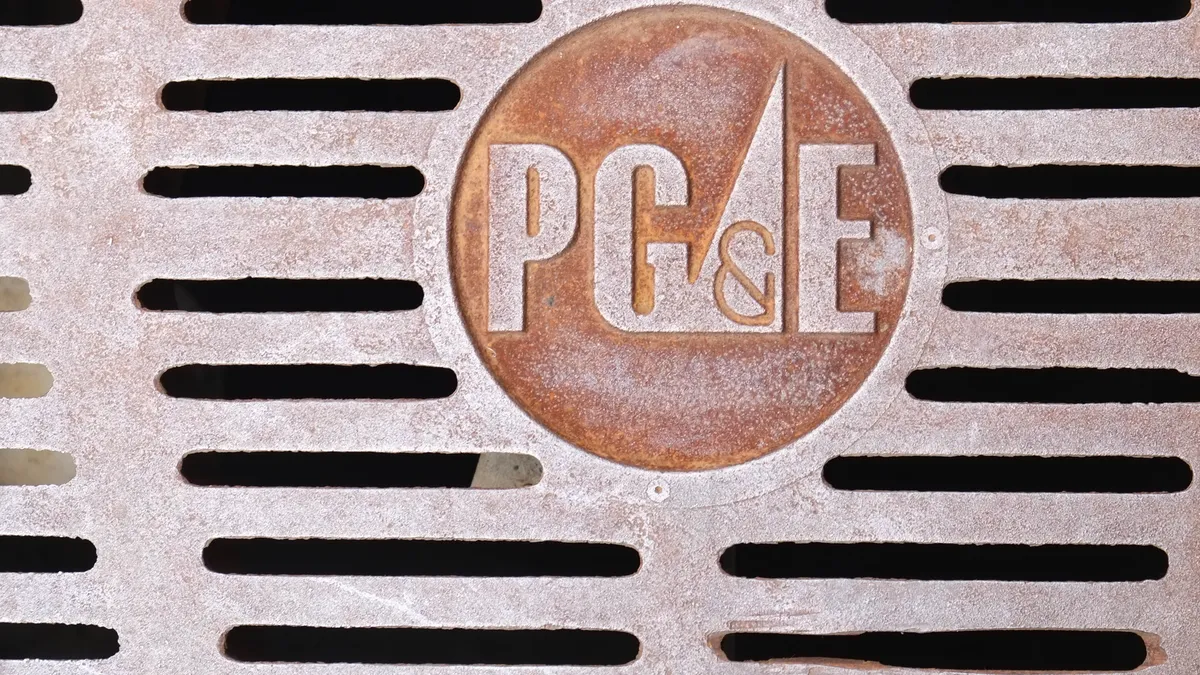Dive Brief:
- Pacific Gas & Electric (PG&E) received court approval on Tuesday to push forward an agreement with its bondholder committee under which the bondholders will withdraw their competing proposal for the company and back PG&E's plan to emerge from bankruptcy instead.
- The utility and parent company PG&E Corp also outlined plans to refresh both boards of directors and base a majority of senior executive incentive compensation on performance metrics, including safety, in testimony filed with the California Public Utilities Commission last Friday. PG&E has "taken to heart" concerns raised by California Gov. Gavin Newsom, D, PG&E Corp President and CEO Bill Johnson said in the testimony.
- PG&E has under five months to exit bankruptcy, under California's Assembly Bill (AB) 1054, in order to access the state's new wildfire insurance fund.
Dive Insight:
PG&E announced a deal with the bondholder committee in late January, following months of sparring over the bondholders' competing reorganization proposal. The utility has already reached settlements with a committee of wildfire victims, a group of insurance companies and a group of local government and public entities affected by the 2017 and 2018 Northern California wildfires, which pushed PG&E into bankruptcy in January 2019.
Only one party objected to the agreement — William Abrams, a resident of Sonoma County, California and a survivor of the wildfires. The court should not approve the deal and gloss over PG&E's "repeated mismanagement, obscene political lobbying, regulatory circumvention and history of criminal activity," Abrams said in a filing last week.
The bondholder agreement is "looking to short-term payouts," Abrams said at the hearing, adding that he is looking at mid-term and long-term consequences.
"As a wildfire survivor, I am surrounded by burned up homes, by people trying to rebuild," he said.
But Montali approved the agreement, saying it represented a compromise between PG&E and the bondholders with some trade-offs.
Meanwhile, PG&E on Friday outlined the measures it plans to take to address the governor's concerns in an updated reorganization plan and testimony filed under the CPUC's review of its bankruptcy process. AB 1054 requires PG&E's plan to remain neutral to ratepayers, align with state climate goals and create a governance structure that can handle safety-related issues. But Newsom has previously said — including in a letter to Johnson in December — that PG&E's plan did not comply with the law.
Under its updated plan, PG&E will exit bankruptcy "as a reimagined utility with an enhanced safety structure, improved operations, and a board and management team focused on providing the safe, reliable, and clean energy our customers expect and deserve," Johnson said in a press release.
As part of that strategy, PG&E plans to refresh the boards of the utility and parent company PG&E Corp, the utility said in its CPUC testimony. It is developing a matrix to outline the skills it wants in its board members, and will ensure that at least a quarter of the directors are California residents. The board will have some oversight of PG&E's wildfire mitigation work.
PG&E also plans to change the structure of senior executive incentive compensation, ensuring that a majority of it is based on "objective, verifiable and auditable outcome-based performance metrics," with a special emphasis on safety.
But the utility's plans could face protests from other parties, like ratepayer advocacy group The Utility Reform Network (TURN). In a tweet Monday, TURN said there is "nothing new or different for customers in this plan."
Also on Monday, California Sen. Scott Wiener, D, introduced a bill that would turn PG&E into a publicly-owned utility — an option that Gov. Newsom has left on the table. Senate Bill 917 would authorize the California Consumer Power and Conservation Financing Authority to acquire an electric corporation by eminent domain, if it has been convicted of felony criminal violations in the last decade.
But PG&E remains convinced that a government takeover "is not the optimal solution that will address the challenges ahead," utility spokesperson Denny Boyles said in an emailed statement.
"We oppose Senator Wiener's proposed framework, and PG&E's facilities are not for sale. Additionally, changing the structure of the company would not create a safer or cleaner operation. Recent takeover attempts have largely failed due to a range of factors," he said.














